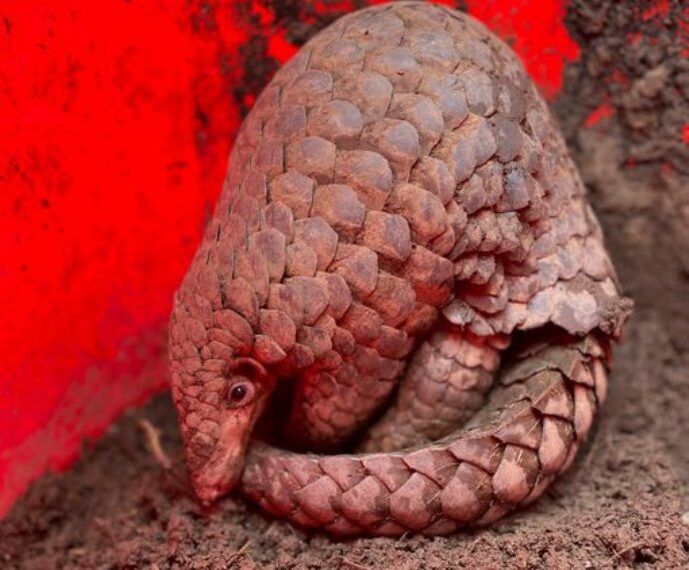Itanagar: A team of researchers from the Zoological Survey of India (ZSI) has discovered a new pangolin species — the Indo-Burmese pangolin (Manis indoburmanica) — in Arunachal Pradesh.
They have identified a previously unknown species of pangolin, genetically distinct from the Chinese and Indian pangolins that are typically found within the country.
As per the findings of the ZSI scientists, this species diverged from the Chinese pangolin (Manis pentadactyla) approximately 3.4 million years ago.
The species is believed to have evolved in isolation during dramatic geo-climatic changes in the Indo-Burma region.
According to the researchers, the newly discovered Indo-Burmese pangolin is 3.8% different at the genome level from the Chinese pangolin.
Taking to X, Chief Minister Pema Khandu wrote, “Nature’s wonders leave us in awe. Congratulations to the scientists of Zoological Survey of India on their discovery of a new Pangolin species in Arunachal Pradesh. Let us preserve the wonderful creatures for future generations.”
https://twitter.com/PemaKhanduBJP/status/1877559094556479940
The findings have been published in the popular scientific journal Mammalian Biology, published from Germany, which is the official journal of the German Society for Mammalian Biology (Deutsche Gesellschaft für Säugetierkunde).
Led by Dr. Mukesh Thakur of the ZSI, the study employed advanced tools to analyse mitochondrial genomes, revealing the distinct genetic identity of this species.
“This discovery highlights the untapped diversity of pangolins and the immense potential of modern genetics in uncovering hidden biodiversity,” said Dr Thakur.
In March 2024, during fieldwork in Silluk village, East Siang district, Lenrik Konchok Wangmo, a researcher with the ZSI, encountered a pangolin captured by local villagers.
She promptly collected samples and photographed the animal before it was safely released back into the wild within the Borguli range of Daying Ering Memorial Wildlife Sanctuary.
“Contributing to this discovery is an honour. It underscores the urgent need to protect pangolin habitats, which face relentless threats from poaching and degradation,” said Wangmo, a native of Arunachal Pradesh.
“The genetic analysis was done and we believe this species evolved in isolation during the Pliocene and the Pleistocene epochs, influenced by climatic and geological shifts. Its current distribution spans parts of Arunachal Pradesh, Assam, and possibly extends to Nepal, Bhutan, and Myanmar,” informed Dr Mukesh Thakur of the ZSI.
This new species belongs to the family Manidae. The colour of the scale is dark brown and dark olive brown with the facial colour of pinkish. Like other Asian pangolins, bristle-like hair is also present all around the body.
Given that pangolins are among the most heavily trafficked mammals worldwide, this new species discovery underscores the critical need for intensified conservation efforts.
According to Dr. Thakur, acknowledging the Indo-Burmese pangolin as a distinct species underscores the urgent need for conservation action. He emphasized the crucial role of collaborative efforts in ensuring the species’ survival.
ALSO READ: 73-foot Indian Tricolour installed in Arunachal Pradesh’s Tawang near China border
ZSI director Dr Dhriti Banerjee hailed the team’s accomplishment. “This discovery is a testament to the importance of scientific research in biodiversity conservation. Safeguarding this species is crucial for maintaining the ecological balance of the Indo-Burma region,” she said.















